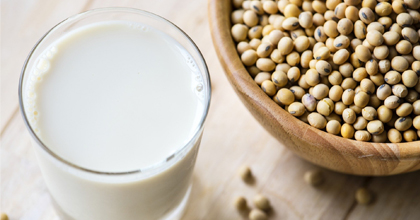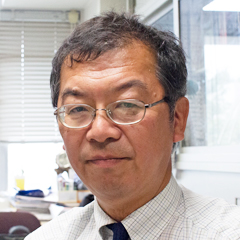Food fermentation originates from the desire to preserve food

What is fermentation? It is generally known as the process in which molds, bacilli, or other microorganisms that grow on food make it better in taste. As for the technical term, however, fermentation is defined as a reaction in which microorganisms decompose organic matter without oxygen to produce energy.
On the other hand, ordinary people think of fermentation as the process in which a foodstuff matures and becomes better in taste. When a foodstuff starts to smell, they say it is decomposed, rotten or tainted. The distinction here is made merely for the convenience of humans. These two phenomena are only two aspects of the same microbial activity. The maturing process often involves the propagation of microorganisms. From a microbial perspective, there is no distinction between fermentation and decomposition.
Then, why do humans ferment foodstuffs through the maturing process at the risk of rotting them? In all likelihood, food fermentation started from their desperate desire to preserve foodstuffs so that they will not starve to death.
Back then, humans had no idea that food maturation is the result of microbial activity since microorganisms are invisible to the unaided eye. At one point, they realized that foodstuffs made to mature somehow often keep longer.
After much trial and error, they realized that maturation can enhance food taste.
Take fermented food making in Asia, notably China, for example. People in the region work harvested raw grains into lumps and put them in a cellar.
Then fungi dwelling in the cellar grow on the surface of the grain lumps. Fungi that grow under such conditions are Rhizopus most of the time. Rhizopus on the surface acidifies its surroundings, thus killing germs there.
Rhizopus also produces an enzyme that decomposes starch in the grains, making them sweet.
As the fermentation proceeds, alcoholic fermentation begins in the core part of the grains. The grain thus fermented becomes Shaoxing wine after being pressed and filtered. It becomes baijiu after it is crushed and distilled. The strained lees are used for pig feed.
Before the food maturing mechanism was understood, people learned by doing to find out the means to control microbial growth and make fermented foods.
Of course, this historical process must have entailed many failed attempts. Fungi living in a cellar are not limited to Rhizopus. This means that other fungi grow faster, defeating Rhizopus.
The process in that case means decomposition for humans, resulting in the waste of grains harvested after hard work, for example.
Nevertheless, peoples in the world came to turn foods they harvested or gathered around them into fermented foods by making effective use of the environment in which they lived. In that sense, fermented foods are comfort foods for these peoples.
Koji molds are microbes domesticated by the Japanese
Japan’s fermented food culture differs strikingly from those in other parts of the world in some respects. For one thing, the typical fungus that serves as the catalyst for fermented foods in Japan is virtually endemic to Japan. It is a type of koji mold known as Aspergillus (or A. oryzae).
Note that the Chinese character rendition of koji mold refers to microorganisms used for fermentation in general, while its katakana rendition refers to the molds of Aspergillus.
Quite similar to A. oryzae is a green mold called Aspergillus flavus (A. flavus). This mold, which is found throughout Asia, produces a toxic substance called aflatoxin, which causes liver disorders and cancer. For this reason, it is taught not to touch green molds in Southeast Asia.
A. flavus and A. oryzae look too similar to be distinguished. Yet A. oryzae differs from A. flavus in three important aspects. First, it does not produce aflatoxin. Second, it has three copies of genes that produce starch-decomposing enzymes. Third, its spores contain several nuclei inside, making their germination faster and more stable.
All these differences lend themselves to artificial fermentation and brewage. It would be too convenient that such a mold exists only in Japan and nowhere else in the world.
The mainstream theory is that ancient Japanese accidentally discovered strains of A. flavus that produce no toxins, and domesticated and propagated them, during which process the strains turned into A. oryzae, which was later known as koji molds.
Koji molds, which have long been used in the fermenting and brewing processes to make miso and sake in Japan, are not strong molds in the natural world.
For this reason, it is almost unthinkable in China and other parts of Asia except Japan that koji molds defeat other molds and grow on grains stored in a cellar.
This is why, the process of making sake, for example, involves steaming rice to kill germs, spreading the steamed rice on the floor of a clean room, and scattering spores of a pure-cultured koji mold over it. The koji mold then grows on every grain of rice and propagates in a short period of time.
Surprisingly, there were providers who dealt specifically in pure-cultured koji molds as far back as the Muromachi period (1336-1573). This is really amazing.
The conventional wisdom is that the pure culture technique was established at the end of the 19th century by Robert Koch of Germany. Japan, however, succeeded in pure-culturing and commercializing rare fermenting molds by the 14th century.
Even in today’s Japan, people who want to make amazake (sweet fermented rice drink) or miso at home usually need to buy koji. Producing a koji mold remains extremely difficult for laypersons.
If the koji-producing technique was established by the 14th century, that means that by then, the Japanese had found non-toxic strains of A. flavus and finally succeeded in domesticating this type of mold after a time-consuming trial-and-error process.
The Japanese have used the koji mold called A. oryzae to make many of the fermented foods unique to Japan, such as sake, miso, and shoyu.
Putting microbes to wider use for the future

There are other fermented foods unique to Japan.
One of them is natto. This sticky food is fermented with Bacillus natto, a subspecies of Bacillus subtilis. Japan is arguably the only country where Bacillus subtilis is used to make fermented foods.
Because no fermented food made with Bacillus subtilis is found in any other country, people from other countries tend to think of natto as being rotten.
Katsuobushi (dried bonito) is also unique to Japan.
The most common means to preserve caught fish is by drying. Bonitos, which are caught most early in the rainy season in Japan, defy drying in the air because of its high moisture content.
This problem can be solved by processing bonitos into katsuobushi. The process of making katsuobushi can be two-fold. The first part involve several cycles of steaming, smoking, and drying to make arabushi (common and low grade type of katsuobushi). Its water content is about 30%. Flakes of arabushi are called hanakatsuo. Arabushi may be further processed into honkarebushi whose water content is 14-15%. Making honkarebushi involves spreading a special mold over its surface to absorb moisture and put it into a cellar. This process is repeated three or four times.
Tsukemono may be yet another fermented food unique to Japan. Various types of pickled vegetables are found in many countries in the world. However, nukazuke (vegetables fermented in rice bran) or any other types of pickled vegetables after being fermented in solid powders are rarely found outside Japan.
Different methods are established to make nukazuke. They are handed down from generation to generation in many homes.
The process of making nukazuke starts with preparing a fermented mash of rice bran and brine and putting unwanted vegetables into it. The purpose is to pass lactic-acid bacilli on the vegetable surface onto the mash for propagation purposes.
The lactic-acid bacilli then produce lactic acid, acidifying the mash. When the acidity of the mash reaches pH4 or so, pathogens and saprogens can’t survive in it any more.
The next step is to remove the unwanted vegetables and put vegetables to be pickled in the mash. The mash needs to be stirred every day. Because lactic-acid bacilli are averse to oxygen, the supply of oxygen inhibits lactic fermentation, preventing the vegetables from becoming too sour in taste.
The failure to stir the mash every day results in the growth of butyric acid bacteria at the bottom. Butyric acid bacteria produce butyric acid that gives off a putrid smell. The supply of oxygen inhibits the growth of butyric acid bacteria because the gas is highly toxic to the bacteria. The film yeast over the surface of the mash, which helps to add savor to the vegetables, gives off a foul smell when it propagates excessively.
This is why the mash needs to be stirred upside down, rather than horizontally. This inactivates lactic-acid bacilli for a while, kills butyric acid bacteria with exposure to oxygen, and cuts off the supply of oxygen to the aerobic film yeast by pushing it into the bottom of the mash. Striking an overall balance in this way is the purpose of stirring the mash.
Nurturing fungi unique to Japan, making the most of fungi not used in other countries, putting much effort into making fermented foods that fit the surrounding natural environment, and handing down reasonable fermentation methods at the household level are all part of the quite rich culture of Japanese fermented food.
It is very fortunate for the Japanese to savor such fermented foodstuffs.
For the future, various types of research are underway to apply molds and other microorganisms for other purposes than fermentation.
At my laboratory, I am studying special proteins called hydrophobins, which allow molds to repel water.
Hydrophobins have the property of self-assembly and absorption. By taking advantage of this property, I am engaged in the development of new functional materials with heavy metal absorption capacity. Also, I am thinking of developing an emulsifier that leverages another property of hydrophobins–a surface active effect that produces a large amount of bubbles in carbonated beverages such as beer and keeps these bubbles for a long time.
I am convinced that microorganisms, which have made tremendous contributions to the human food culture, will help to further enrich our lives in many fields.
* The information contained herein is current as of December 2019.
* The contents of articles on Meiji.net are based on the personal ideas and opinions of the author and do not indicate the official opinion of Meiji University.
* I work to achieve SDGs related to the educational and research themes that I am currently engaged in.
Information noted in the articles and videos, such as positions and affiliations, are current at the time of production.


